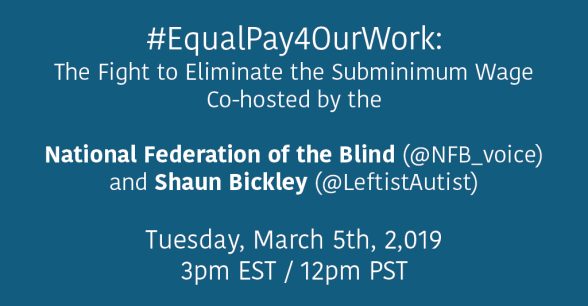Living (and Leaving) Diagnostic Labels
When I was 20 months old, I was diagnosed with what was then known as Juvenile Rheumatoid Arthritis (JRA). Recently, though, the terminology has changed to Juvenile Idiopathic Arthritis (JIA), reflecting the often ambiguous origins and trajectory of the illness.
Prognosis is notoriously elusive in JIA disease, but in 1977, when I was diagnosed, this was especially the case. My condition proved to be particularly severe, however, and across the next four decades, I would spend a great deal of time in sundry doctors’ offices, clinics, and rehabilitation centers. There I would collect diagnoses as easily as some people collect picture postcards or salt and pepper shakers from around the world.
When I was growing up, it felt as if every new medical consult brought with it another label defining some feature of my body as inherently pathological. Indelibly marked. Fundamentally altered and “othered” by the slow march of the JIA through the cells and tissues of my body.
I was a fiercely imaginative child, forever losing myself in books and endlessly fascinated by words. So perhaps it isn’t surprising that the labels variously ascribed to my body should have an impact.
At the time, I recall being particularly stricken by how many of the terms seemed to derive from nature: hollow reed deformity, wheat stalk fracture, boutonniere deformity. With every phrase casually bandied about by the latest specialist, clinician, physiologist, or therapist assigned to my case, my mind immediately conjured the image. My spine transformed into a bamboo shoot. Golden seed grasses displaced my fractured tibia and fibula. Fluffy white chrysanthemum petals bloomed from my fingertips.
Soon, I no longer recognized my body as my own. No longer recognized it as human. It remained, perhaps, an organic entity. A living being. But it had become chimerical. An amalgamation of diagnoses. A swirling constellation of pathological disorder.
Perhaps this, more than any other attribute of my experience with JIA, is why I became a writer and a disability scholar. In The Birth of the Clinic, Foucault describes the diagnostic label as that which renders the unstable, inherently vulnerable body docile, predictable, domesticated. In pathologizing the body, Foucault argues, it becomes knowable, classifiable. “Untamed” sickness is domesticated through the language of diagnosis.
Ultimately, though, this is not a matter of wresting control from the forces of biological chaos. Rather, it’s about conscripting the recalcitrant body into the mechanisms of power, about subjugating the body that refuses to play by the rules. It’s about invoking the power of authority to humble extraordinary bodies, to borrow Rosemarie Garland-Thomson’s terminology, into ordinariness, even if that ordinariness was the mundanity of pathology, of one diagnostic label appended to another until only the expert could, at last, understand the body to which they were ascribed.
To be diagnosed is to be taxonomized as pathological, and to be pathologized is to be coopted into the domain of the clinic, where only the expert has the power to comprehend, to describe, and to define. It’s a subtle but pernicious game that establishes power relationships fundamentally through language.
I have never wholly escaped the labels assigned to me over the years. I still at times look at my fingers and see flowers. When my neck refuses to yield to my commands to turn this way or that, I instinctively envision a rigid hollow reed.
It wasn’t until I learned that the name of my condition had been formally changed within the medical establishment that I realized how deeply I had internalized my own diagnostic label(s). I felt, in fact, a deeply emotional but instinctive sense of resistance in learning that Juvenile Rheumatoid Arthritis had suddenly “become” Juvenile Idiopathic Arthritis. The knowledge came with a surprising, almost absurd sense of panic, as if my identity had been threatened. Without JRA, who am I?
And what is more troubling is that such questions, such moments of existential confusion, came to me not as a child, not as a teenager still developing a sense of self. I was a grown woman. Not only that, I was a scholar, with a PhD in English, more than a decade of teaching writing, and nearly 20 years of studying both language and it relationship to disability. Yet those questions came unbidden, that sense of discomfiture arose from a visceral place.
The language of diagnosis is intimate and powerful. It all too often defines and circumscribes one’s place in society, in the community, in the power/knowledge structures through which our modern world operates. But it also shapes our sense of self, who and how we are in the world. And thus, it is the point where resistance must begin, where counternarratives must emerge. For every diagnostic label attached to a living, breathing, autonomous human being there must be a counter-descriptor, derived from, for, and by the person themselves. And that self-narrative must supersede all others, including and in particular the now superordinate language of the clinic.
And yet, a caveat: I do not propose that we abandon the language of the clinic. Understanding illness and injury and ensuring quality of care depends upon a standard and efficient discourse among caregivers. But it is imperative that the discourse of the patient neither be excluded nor subordinated.
Therapeutic models, whatever their stripe, must privilege patient-directed discourse. Opportunities for self-narrative must be integrated into treatment strategies, whether in the form of writing therapy–without or without the mediation of an assistant– oral storytelling, or some other form of self-expression. Patient-driven discourse must inform the clinical encounter, not in the standard format of the clinician-directed case history and medical narrative but in the idiosyncratic forms through which the patient chooses to narrate, describe, and discuss their embodied experience. And this is a skill that clinicians must be trained in during medical school, lest they never learn to appreciate the harm that diagnostic labels can inflict. And in conjunction with this, the self-narratives of persons with disabilities, outside of the familiar and exploitative binary of the trauma porn/supercrip genres, must flood our classrooms, our community, and our mass communications.
Only in this way will persons with disabilities be heard…in the clinic, in the community, in the media. And it must begin immediately, before diagnostic labels start to be internalized by those at whom they are directed. The sooner persons with disabilities assume power over the language of our embodied experience, the more quickly the language of the clinic will lose its power over us.
About Rooted In Rights
Rooted in Rights exists to amplify the perspectives of the disability community. Blog posts and storyteller videos that we publish and content we re-share on social media do not necessarily reflect the opinions or values of Rooted in Rights nor indicate an endorsement of a program or service by Rooted in Rights. We respect and aim to reflect the diversity of opinions and experiences of the disability community. Rooted in Rights seeks to highlight discussions, not direct them. Learn more about Rooted In Rights



